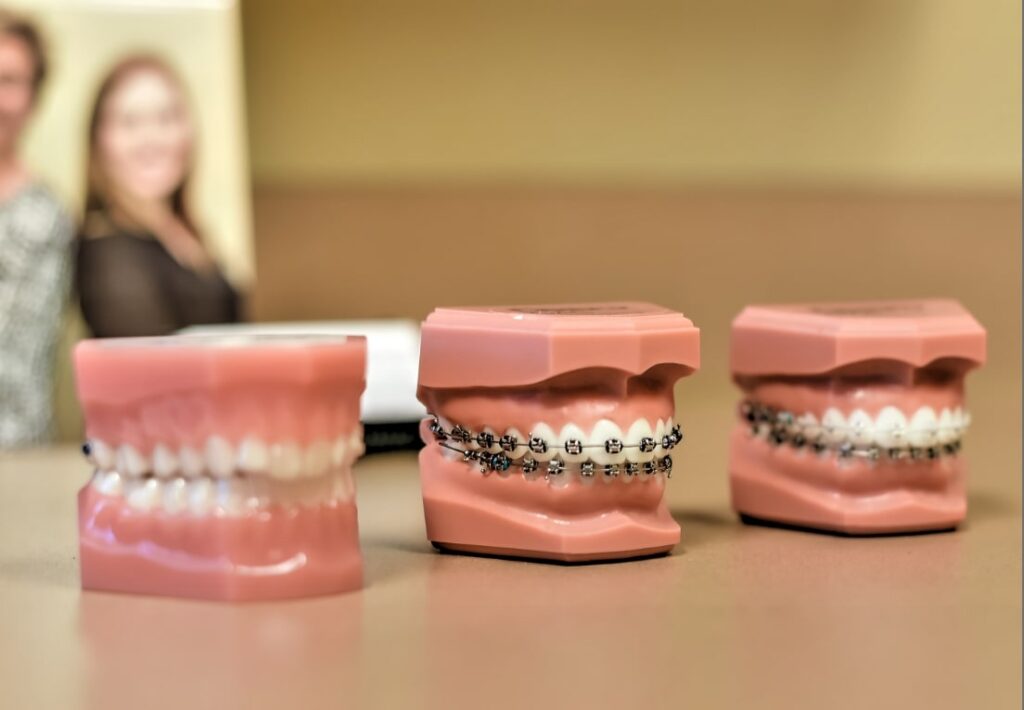Comprehensive Overview to Orthodontics Procedures for Fixing Dental Imbalances
Recognizing the ins and outs of each treatment, including their systems, advantages, and potential downsides, is important in making educated choices about one's orthodontic therapy. As we navigate through the thorough guide to orthodontic treatments for correcting oral misalignments, the complex information of each technique will unravel, shedding light on the course towards a useful and unified oral positioning.
Orthodontic Procedures Overview

Normal changes and tracking are vital components of orthodontic treatment to ensure development is on track and to make any kind of needed alterations along the method. By undergoing orthodontic treatments, individuals can not just accomplish a straighter smile yet additionally boost their general dental health and wellness and feature.
Conventional Braces: How They Work
When taking into consideration orthodontic therapies for dental imbalances, typical dental braces stand out as a tried and true method for fixing teeth placing. Traditional braces consist of brackets, cords, and bands that work together to use constant pressure on the teeth, progressively relocating them into the wanted placement.
One key facet of how typical braces job is the process of bone remodeling. As stress is related to the teeth via the braces, the bone bordering the teeth is reshaped to sustain the brand-new tooth positions. This improvement is necessary for the long-term stability of the fixed positioning. Individuals will certainly require routine adjustments at the orthodontist's workplace to make certain the braces remain to apply the proper stress for reliable teeth movement.
Invisible Aligners: Cons and pros
Invisible aligners provide a discreet and convenient alternative to standard braces for remedying oral misalignments. These clear, personalized trays are basically unseen when put on, making them an enticing alternative for individuals seeking a more aesthetically pleasing orthodontic therapy. One of the key benefits of unseen aligners is their removability, permitting less complicated maintenance of oral hygiene compared to traditional braces. Patients can get rid of the aligners prior to eating or brushing their teeth, lowering the threat of food getting stuck in the appliance and simplifying the cleansing process.

Surgical Orthodontic Options
Surgical interventions in orthodontics existing practical alternatives for resolving complex oral misalignments that might not be efficiently fixed via traditional orthodontic treatments. While unnoticeable aligners and traditional braces can remedy many orthodontic problems, specific situations need medical treatment to accomplish optimum results. Surgical orthodontic choices are typically suggested for serious malocclusions, substantial jaw discrepancies, and cases where the underlying bone structure needs alteration to attain proper positioning.
One typical medical orthodontic treatment is orthognathic surgical procedure, which involves rearranging the jaws to correct functional concerns such as trouble talking or eating. This surgery is often executed in partnership with an orthodontist who helps straighten the teeth prior to and after the procedure. Surgical orthodontics may also involve procedures to reveal influenced teeth, get rid of excess gum tissue, or reshape the jawbone to create an extra unified facial profile.
Before taking into consideration medical orthodontic choices, people undertake a thorough evaluation to establish the need and potential advantages of such interventions. cumming braces. While surgical treatment might seem overwhelming, it can substantially boost both the function and appearances of the smile in situations where standard orthodontic therapies fall short
Retainers and Post-Treatment Treatment

Post-treatment care entails complying with the orthodontist's guidelines vigilantly. This might include correct oral hygiene techniques, going to follow-up consultations, and dental hygiene clinic using the retainers as suggested. Failing to abide by post-treatment care directions can cause relapse, where the teeth gradually relocate back in the direction of their original settings. Consistent retainer wear, good oral health, and regular dental exams are necessary for maintaining the results attained through orthodontic surgical procedure and ensuring the long-lasting stability of the remedied dental alignment.
Final Thought
In dentists office final thought, orthodontic procedures offer various alternatives for remedying dental misalignments. Typical dental braces utilize metal braces and cables to shift teeth right into appropriate alignment. Invisible aligners give a more very discreet choice but might not appropriate for all cases. Surgical orthodontic alternatives are offered for much more severe imbalances. Retainers are typically made use of post-treatment to preserve the new placement. In general, orthodontic procedures can properly improve oral health and wellness and aesthetic look.
As we browse through the comprehensive overview to orthodontic procedures for dealing with oral misalignments, the detailed details of each approach will unravel, shedding light on the course toward a harmonious and useful oral positioning. - orthodontics
One of the most typical orthodontic treatments is the use of dental braces, which are composed of metal brackets and cords that apply gentle stress to gradually move teeth right into the desired setting.When considering orthodontic treatments for oral misalignments, standard dental braces stand out as a time-tested technique for remedying teeth placing. Additionally, unnoticeable aligners might not be ideal for intricate orthodontic concerns that require even more significant teeth movement, as they are usually advised for mild to moderate situations. Retainers are personalized orthodontic devices created to hold teeth in their dealt with placements after the completion of orthodontic treatment.
Comments on “The Benefits of Selecting a Cumming Orthodontist for Your Braces and Aligners”